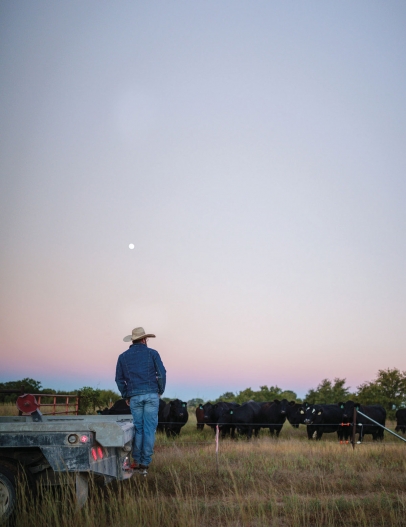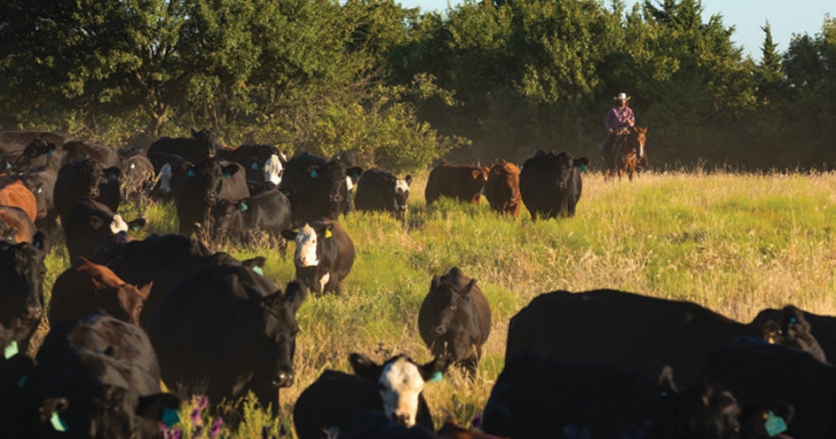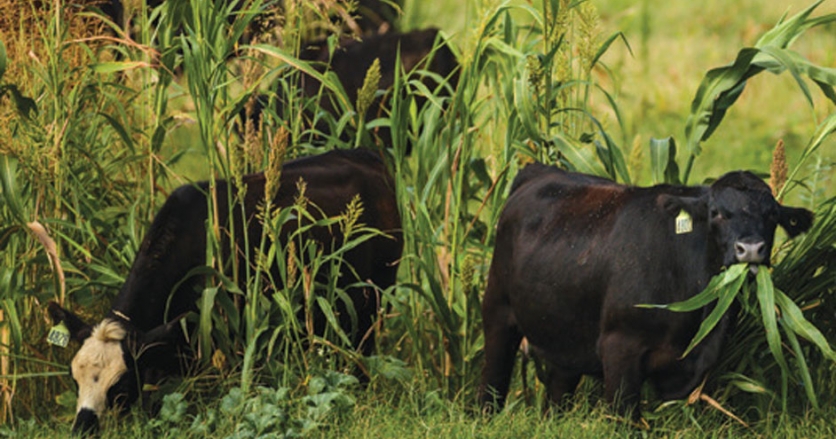Noble Research Institute - Back to the Roots
The nation’s largest agricultural research nonprofit recently made a small investment with big implications: It bought new shovels.
“They’re about the length of a sharp shooter [a type of shovel], and their handles are practically unbreakable,” says Hugh Aljoe, the Noble Research Institute’s director of ranches, outreach, and partnerships.
Carefully wielded, the shovels slice straight through a section of dense prairie grass, revealing a universe of complex and symbiotic biology. At least, that’s what you want to find. When the Noble Research Institute was founded in 1945, southern Oklahoma was still reeling from the impact of the Dust Bowl, a catastrophe both natural and man-made in origin that had stripped the soil of nearly everything good.
Lloyd Noble was an oilman who skillfully capitalized on the early big-boom days of Oklahoma crude. But he was also several other things: an Ardmore native, an experienced aviator, and an intuitive conservationist. Flying gave him a bird’s-eye view of the nation’s crop-land, and even from 5,000 feet he could tell that all was not well. Noble famously said, “No civilization has outlived the usefulness of its soils. When the soil is destroyed, the nation is gone.” With that in mind, he established and funded what was then called The Samuel Roberts Noble Foundation with the goal of “benefiting mankind by assisting agricultural producers.”
For nearly 80 years, that’s exactly what the Noble Research Institute (now under a new name) has done. It’s helped producers with nearly every imaginable aspect of agriculture, from crop research to grazing consultations to wildlife management. But recently, leaders of the organization began to feel that perhaps they were giving producers too much help in too many arenas without putting enough focus on the foundation of agriculture and Lloyd Noble’s vision: the soil.
“If Mr. Noble was here today, I think he would have been a little disappointed that we weren’t changing the landscape as effectively as we could,” says Steve Rhines, the institute’s president and chief executive officer. In early 2019, Rhines took a proposal to the Noble Institute’s board that suggested the organization shift and narrow its focus to exclusively support regenerative agriculture, and to serve farmers across the country, not just in southern Oklahoma. The proposal was accepted, and the organization eventually paused all public programming for three years in order to train, prepare, and design new materials. Its first new event will take place in July.
“Regenerative” is a buzzword these days in food and ag circles, but while it may be trending, it’s not new. Regenerative ag is nothing more and nothing less than the practice of restoring the land rather than depleting it; working with nature instead of interrupting it.
“Mr. Noble spoke of all the same concepts, he just didn’t have access to the word ‘regenerative,’” Rhines says.
Aljoe has spent the last 27 years at the Noble Institute. Now he will be one of the people using a new shovel.
“We all spent years looking at everything above the soil without looking at the soil itself,” Aljoe says. “We looked at chemicals, but not the biology of the soli. Now we’re looking at how that biology can help us.”
What does regenerative ag look like in practice? Fewer inputs (less man-made fertilizer or cattle wormer, for example) and denser grazing are two methods a rancher might employ to help her operation mimic the ecosystem of a natural prairie. Dense grazing might seem counterintuitive, but research has shown that when cattle graze a small section of grass, then move on quickly, they mimic the behavior of migrating buffalo, who evolved to have a symbiotic relationship with grasslands. In an intense grazing scenario, cattle do their own fertilizing, and without wormers in their guts, their “fertilizer” doesn’t kill organisms that are essential to soil health.
Aljoe said that in his many years of advising producers, ranchers who took a more regenerative approach have seen improvements in their bottom line as well. “The guys who have been really successful were the ones who were looking to have fewer inputs and work more holistically on their land. They were looking to continually improve their land,” he says.
The success of farmers and ranchers is absolutely central to the Noble Institute’s approach, and to Lloyd Noble’s original vision.
“Profitability is key,” says Rhines, “because if I lose the land manager, I lose the person who wants to improve the land. This is a career that is often right on the razor’s edge of survival.”
According to the American Farmland Trust, the ownership of 40% of the nation’s farmland will be in transition over the next 15 years as older farmers retire. And make no mistake: Farmland without a profitable farm does not simply return to native prairie. It is often sold for development, which is a lost opportunity for food production, carbon sequestration, and a host of other societal benefits.
To that end, the Noble Research Institute is about to deploy all of the significant resources at its disposal to save America’s farm and ranch land by teaching land managers how to save their soil. It will be hosting workshops, conferences, and group trainings, and will continue to use its own 13,000 acres of ranchland for research and education.
“Farmers and ranchers want to make the right choices and leave the land better than they found it,” says Rhines. “We want to give them the tools to succeed.”
> The Noble Research Institute is located in Ardmore, Oklahoma. Learn more about its resources and programming at noble.org or get in touch by phone at (580) 223-5810.








